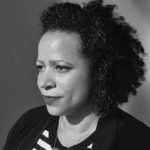Sixty-three years after the Supreme Court’s ruling in Brown v. Board of Education, many schools across the country either remain segregated or have re-segregated.

Nicole-Hannah Jones
Journalist Nikole Hannah-Jones tells Fresh Air‘s Terry Gross that when it comes to school segregation, separate is never truly equal.
There’s never been a moment in the history of this country where black people who have been isolated from white people have gotten the same resources,” Hannah-Jones says. “They often don’t have the same level of instruction. They often don’t have strong principals. They often don’t have the same technology.”
Still, when it was time for Hannah-Jones’ daughter, Najya, to attend kindergarten, the journalist chose the public school near their home in Bedford-Stuyvesant, Brooklyn, even though its students were almost all poor and black or Latino. Hannah-Jones later wrote about that decision in The New York Times Magazine.
For Hannah-Jones, sending Najya to the neighborhood school was a moral issue. “It is important to understand that the inequality we see, school segregation, is both structural, it is systemic, but it’s also upheld by individual choices,” she says. “As long as individual parents continue to make choices that only benefit their own children … we’re not going to see a change.”
Hannah-Jones adds that her daughter is thriving at school. “I know she’s learning a lot,” she says. “I think it is making her a good citizen. … It is teaching her that children who have less resources than her are not any less intelligent than her or not any less worthy than her.”